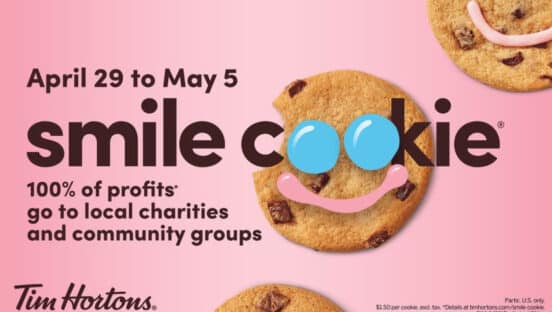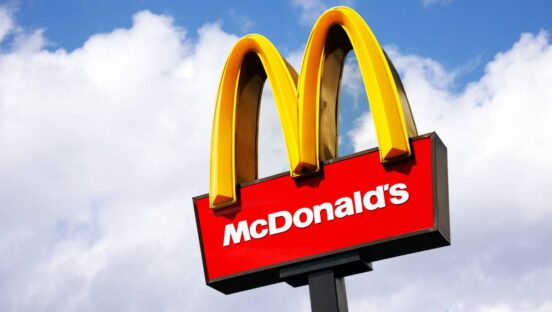You’ve got to be kidding. That was Wendy’s U.S. president and chief commercial officer Kurt Kane’s first reaction as COVID-19 shut down the restaurant world in mid-March 2020. For Wendy’s, the timing was particularly off.
In the first week of the month, the company’s domestic same-store sales spiked 16 percent.
The culprit? Arguably the biggest menu and strategic initiative in recent quick-service history. Wendy’s had just launched breakfast—its fifth run at the daypart—in a more concerted and collective effort than ever before. The chain spent $20 million pre-launch and hired about 20,000 people.
“We were ready to go,” Kane says. “We had some huge platforms built around it. March Madness, with the NCAA sponsorship that we have. A fantastic media platform.”
While things were going “fantastically well,” Kane says, Wendy’s hadn’t hit the accelerator yet. It never got the chance.
When stay-at-home orders spread nationwide, breakfast was the meal most easily brought into homes. It was an uphill battle before the mountain became Everest. Pre-pandemic, The NPD Group estimated just 15 percent of food and beverages consumed at breakfast came from restaurants.
READ MORE: Why Being a ‘People Business’ Helped Wendy’s Navigate COVID
Tack on remote work and restricted mobility in a COVID climate, and breakfast, along with late-night, suffered the sharpest blow. Quick-service breakfast consumption dropped 35 percent in April from the previous year, compared to dinner’s decline of only 22 percent.
Kane says Wendy’s wasn’t tempted to stop breakfast or go backward. “We did have to rethink it a lot,” he says.
In this respect, the work Wendy’s did to differentiate 2020’s attempt came into focus.
The last time Wendy’s tried to crash the fast-food breakfast wars was 2010, with Roland Smith at the helm. The company rolled tests across six markets and set an early goal to reach 1,000 units (or 15–16 percent of its U.S. system) by the end of the following year. Financially, Wendy’s wanted to generate an incremental $150,000–$160,000 in sales in the first year—roughly $3,000 per week, per store—and reach $200,000 by year five. This implied breakfast could mix 10 percent of the business within the first year and expand to 12.5 percent by the fifth.
What ended up happening? Franchisees brought in closer to $2,700 per week, below breakeven, and with uncertain levels of cannibalization on lunch and dinner. Food costs for new items, like an artisan egg sandwich and Mornin’ Melt Panini, ran higher and pressed pilot stores 150–200 basis points above non-breakfast units.
And breakfast stalled somewhere in the 600-700 restaurant range.
When Wendy’s announced in September 2019 it was giving breakfast another go, the question was obvious: Why would this attempt succeed where others failed?
“Some of the things that had gotten in the way in the past were really just related to the fact that while we focused on making sure that we had really good and high-quality food that lived up to our brand reputation, we didn’t think enough about the operational implications,” Kane says. “We didn’t think enough about what the impact was at the restaurant when you go through that transition from breakfast to lunch and what that means. And it was just really hard to execute and operate.”
[image source_ID=”130175″]
In 2010, Wendy’s selective market test made it harder to use wider-reaching media channels, and easier for competition to aggressively counter Wendy’s gains. Essentially, not going all-in on day one diluted the scale benefits Wendy’s typically enjoys.
McDonald’s, for one, grabbed outdoor advertising in Wendy’s test markets and aggressively discounted items to defend its breakfast turf.
This time, though, “2020 was going to be the year of breakfast for us,” Kane says. And everybody at Wendy’s knew it.
The company initially planned to deploy $70 million to $80 million to raise awareness, with corporate funding up to $50 million. Instead, as Wendy’s abated marketing fund contributions on breakfast sales from franchisees in the face of COVID, the number ended up closer to $15 million.
Yet to Kane’s earlier point, Wendy’s breakfast commitment didn’t break apart.
Previously, he says, Wendy’s approached breakfast as an attempt to validate the idea. “We made it really easy for our competitors to come in and do a test market and really tsunami-ed the test market with media and advertising dollars that made it hard to get a read,” Kane says. “It really got us stuck at the start line for far too long.”
Wendy’s built out breakfast in direct partnership with franchisees and its operator community. The company invited a handful of franchisees early on to talk about the history. What worked. What hadn’t. What needed to change.
Some of the $20 million was used to coordinate a national launch supported by advertising. Wendy’s didn’t go market-by-market with its message.
“That really opened the door for getting the entire Wendy’s system supportive of what we needed to do when they saw how the program had been built,” Kane says.
Importantly, the company also created a breakfast menu with 18 unique ingredients. Some past versions were in the mid-40s. It’s breakfast sandwich focused (nine at launch) with some spins on classics, like the Breakfast Baconator and Frosty-ccino.
The 2020 iteration of breakfast was also drive-thru centric, with stores opening the window at 6:30, but keeping the dining room closed until 9.
The profitability and execution angle of Wendy’s latest run was essential, Kane says. And it’s one of the core reasons it held up against COVID—the bottom line never exited the equation.
In fact, one of Wendy’s pandemic response tactics was to reduce breakfast’s staffing requirement to two employees. Alongside the marketing abatement, breakfast breakeven dropped by about 35 percent, on average, which helped keep it profitable despite lowered sales volume.
“I think what worked was a focus on profitability from the very outset,” Kane says. “In the past, we thought about what does it take and how long do you have to be willing to lose money at breakfast to be able to really earn your way into it. And we built [this version] with a very different mindset. Which was, how do we get out of the gate really quickly with a program that’s going to be profitable from the word-go? That’s the biggest difference in the way we thought about it.”
Also, it positioned Wendy’s to think bigger. By March 2021, with stores getting back on line and the overall landscape improving, the company was able to close its fiscal calendar with its two highest global same-store sales quarters in the last 15 years.
 [image source_ID=”130173″]
[image source_ID=”130173″]
Breakfast, despite everything, finished the year at 7 percent of sales as Wendy’s reported Q4 comps growth of 5.5 percent. Breakfast contributed roughly 6.5 percent to Wendy’s U.S. same-store sales and “drove a meaningful increase to restaurant AUVs in 2020,” CEO Todd Penegor said at the time.
The following quarter, breakfast remained at 7 percent even as Wendy’s rest-of-the-day business grew “very, very strongly,” Penegor said, suggesting overall recovery will carry breakfast right alongside it. Same-store sales rose 13 percent that period.
And Wendy’s did all of this with breakfast sticking around the 50 percent awareness mark, meaning there remains plenty of runway left to chase.
So much so executives said they expect to grow breakfast by 30 percent in 2021 through a combination of year-over-year comps expansion via higher average weekly sales, as well as rolling over two months where Wendy’s didn’t have breakfast launched nationwide. Plus, heightened marketing now that the abatement package ended.
In all, Penegor said, Wendy’s is confident breakfast can reach 10 percent of sales by the end of 2022. If it gets there, we’re talking a roughly $1 billion business.
There’s reason to be optimistic. One of the best potential predictors of what’s to come might be the 300 legacy restaurants that offered breakfast prior to Wendy’s rollout in March 2020. Those stores have grown the daypart to more than 10 percent of mix.
It’s all about creating a habit, CFO Gunther Plosch noted in May. “It’s a matter of time,” he said. “To break the habit is a matter of investments, right? So that’s why we’re investing around $15 million [in 2021] to make sure we are doing the right thing—driving awareness, awareness leads to trial, trial leads to repeat trial, and the repeat leads to growth.”
In Q1 of 2021, all of Wendy’s breakfast metrics improved. Sales dollars grew. Awareness lifted. Repeat business ticked up.
Wendy’s hasn’t been shy about its positioning throughout and going forward. Wendy’s CMO Carl Loredo referred to the competitive field as “the world of frozen arches,” a not so-veiled reference to McDonald’s, which just six years ago held 17.4 percent of the morning share, according to Euromonitor.
If you look at the reason Wendy’s was born in 1969, Kane says, “it was to be a better alternative than McDonald’s and Burger King 50 years ago. And that’s still the case today.”
So in this respect, Wendy’s breakfast return mirrors some of its past ones. Quality first is still the banner. “We had to be a meaningful better alternative in their perception on the quality of the food than the choices that were already part of their everyday routine,” Kane says.
Customers recognized it. Quality and value perceptions didn’t suffer during COVID.
“We came into the morning daypart as an underdog,” Loredo said in January. “And we launched it in the midst of COVID. And yet here we are, less than a year into it, and we’re matching competitors that have been in the market for 50 years. Literally going from a breakfast nobody to a breakfast somebody, and loving the heck out of every minute of it.”
Breakfast quickly became Wendy’s highest-rated daypart, in terms of guest satisfaction scores. It also appreciated high repeat orders. All the while, Penegor said, a “fairly large percentage” of existing customers still hadn’t tried it yet.

Wendy’s restaurant of tomorrow is built to scale globally.
With incremental spending on deck in 2021 and beyond, Wendy’s believes it can change that. Toss in improved mobility, and breakfast remains a business with significant upside.
How Wendy’s gets the word out is becoming more sophisticated. Wendy’s launched its rewards program nationally last July. It saw monthly active users increase by about 25 percent since. At year’s end, there were roughly 3 million active members to go along with 12 million total. Wendy’s sees that business accelerating to 10 percent of sales by the end of 2021. Additionally, digital as a whole expanded to more than 6 percent of domestic business in Q4, which was more than double the prior-year mark. Wendy’s digital traffic share growth reached double-digits.
Looking at the broader picture, Wendy’s spent much of 2020 turning restaurants into what it calls “frictionless transaction centers.”
Kane says the opportunity comes in asking, how can you take a parking lot and transform it into something else? “What’s the best way to have the most touchpoints or access points for a customer using the assets that we have, and even the parking lot facility around it?” he says.
A site where Wendy’s can engage as many people as possible, and reduce points of friction along the way.
Curbside and mobile grab-and-go launched in 2020, and should only grow as awareness builds around new ordering platforms. And at the center of Wendy’s digital business will be the chance to build one-to-one relationships that weren’t viable before, Kane says.
As this unfolds, accessibility will anchor significant new unit growth. The company recently set an imminent target of 3 percent global unit expansion, with plans to accelerate after. The long-view number: 8,000 Wendy’s restaurants by year-end 2025 (there were 6,828 at the end of 2020).
Wendy’s unveiled new incentive options in March to reward franchisees for restaurant growth, accelerated timing, and making multi-year commitments to grow operations. Additionally, franchisees can earn more incentive value by doing conversions—something expected to pick up in COVID’s wake. Wendy’s even has a conversion task force designed to transform different builds. The goal, in all formats, is for operators to see cash-on-cash returns of about 15–20 percent.
As of mid-May, Wendy’s had roughly 150 new potential franchisees globally in the pipeline at different stages. That included more than 20 looking into the U.K., a market Wendy’s entered for the first time in early June, and believes could hold as many as 400 stores.
“When I look at the array of different asset types of shapes we have available to build for our franchise community, for ourselves, is probably the broadest that I’ve seen in [quick service],” Kane says. “And that’s been by choice, because we’re trying to meet different needs of different trade areas.”
Wendy’s push for innovation dates back to 2017 when it launched the Smart 2.0 prototype. The conversation centered on enhancing experiences, freshening Wendy’s look, and connecting digital into the physical space. That meant the integration of the mobile order app, curbside, kiosks, and pickup shelves.
Two-thirds of Wendy’s footprint has been remodeled. Restaurants with the image activation experience a 30-basis point improvement, or a mid-to-high single-digit lift in same-store sales, the company said. The program is expected to finish by 2024.

But more recently, Wendy’s has gone further with NextGen and drive-thru-only designs, as well as a traditional freestanding solution that better enables digital and delivery. The drive-thru only look was actually in the works pre-virus and debuted in the Philippines. Another is headed to the U.K.
Ghost kitchens are opening globally as well. Abigail Pringle, Wendy’s chief development officer, said Wendy’s has one restaurant for every 135,000 people in some of the biggest metro cities. Virtual options allow it to penetrate deeper and fill gaps between those venues. “People have to give up on having Wendy’s,” Pringle said in May. “We don’t want to have that.”
Wendy’s also plans to dial up nontraditional locations— military bases, universities, hospitals, and even zoos—to further ignite its engine. As it approaches the 8,000 dart, 30 percent of units will be nontraditional, Pringle said. The company also knows franchisees appreciate diversified options as they outline expansion. Container restaurants and modular buildings are part of the path, too.
“You’re going to see all of that,” Kane says. “And I think even menu flexibility within those asset types because different size and shape restaurants may or may not be able to support the entire menu that we have in our traditional freestanding assets. Well, what does that mean? And how do we change that and make sure we stay laser focused?”
One example was Wendy’s call to go from two different salad sizes to one.
“We’re going to continue leaning in and doing things creative like that, and find solutions that make it fun and energizing to run our restaurants every day,” Kane says. “And allow us to do different size footprints that enable us to get into different types of trade areas.”
Breakfast wasn’t absent from this conversation, either. The introduction proved transformative, Kane says, to Wendy’s unit-level economics and its brand. The company now has fuller asset utilization, so even traditional freestanding stores are significantly more profitable than they were before, “because we’re using the fixed cost that we have of those buildings and spreading it now with an additional layer of sales from breakfast,” Kane says.
“We think we’re in a position for turbo-charged growth,” he adds, “both on development as well as total sales, because of what’s happening with the unit economics for Wendy’s. And I think, honestly, it gets underestimated just how transformative some of those moves have been, and what kind of growth it sets us up for. I’m very confident we’ve got our best days ahead of us.”






